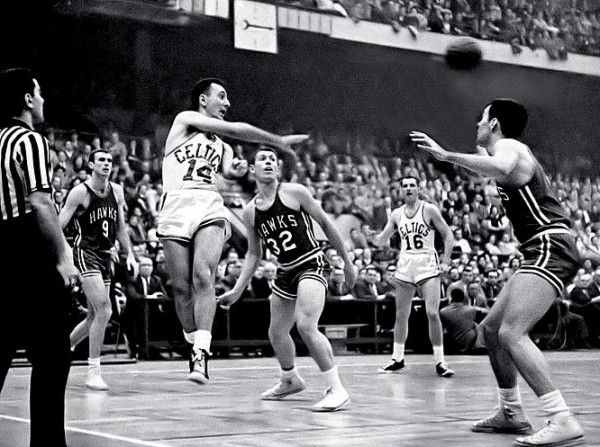Posted by KCarpenter on November 10th, 2011

Kellen Carpenter is an ACC microsite staffer and an RTC columnist. Each week, BTN will take an in-depth look at some interesting aspect of college basketball’s statistical arcana.
The phrase “pure point guard” is loaded. It implies that there is a Platonic notion of point guard which all mortal players can only aspire to. We are just fools in a cave looking at a shadow on the wall, but that is all we have when the purest conception of the point guard is beyond our field of vision. I can only assume that this unknowable figure looks something like Bob Cousy. It also implies that outside of “pure point” play, there exists a realm of impure play where the division of basketball labor isn’t as orthodox as it is inside Plato’s basketball cave.

This is What a Pure Point Looks Like
In a point guard, “purity” is code for being a pass-first lead guard. To the traditional school of thought, the roles on a basketball team are strictly regimented: The point guard passes, the shooting guard shoots, but not as much as either forward. The center, near-immobile but Mikan-like in his hunger for loose balls has a single task: rebound the basketball and get it to the point guard. Of course, this idea of the traditional division of labor in basketball hasn’t really held since the days of Mikan himself. Modern basketball, by which I mean basketball since the mid-sixties, has embraced the hybridization of positions. Basketball has for years acknowledged the idea that team roles are mutable and that positions are flexible. While few have embraced the full-on positional revolution explicated by Bethlehem Shoals and the NBA-heads of the dearly-departed Free Darko, most of us have made peace with the idea that it’s okay for point guards to score occasionally. Kemba Walker and Jimmer Fredette were the break-out stars of the past college basketball season and both undoubtedly play point guard in a thoroughly impure way. If those guys aren’t pure then shouldn’t we all hope to be dirty?
In all seriousness, the concept of the purity of the lead guard is a silly concept to dwell on. Still, like all sports cliches, the idea persists because it’s a convenient way to sum up the play of pass-first point guards, who somehow pay homage to a golden era of basketball which is more than ancient history. Still the idea of the pass-first point guard is an intriguing one in this era of high-scoring combo guards. Like the crocodile, the pass-first guard is a relic of a by-gone epoch, a living fossil and a reminder of the dinosaurs who ruled the earth during that time. Is the crocodile a better predator than the tiger? This isn’t a debate that I’m interested in. The pass-first point guard, by mere value of their odd, antiquarian style is a unique species worth studying.
Read the rest of this entry »
| behind the numbers, Regular Features, Uncategorized
| Tagged: anthony crater, augustus gilchrist, bob cousy, cameron jones, cj reed, harrison barnes, jared sullinger, jason brickman, Jawanza Poland, jimmer fredette, kemba walker, kendall marshall, stallon saldivar, talor battle, tim frazier, tyler zeller, unc, william buford
Share this story











































